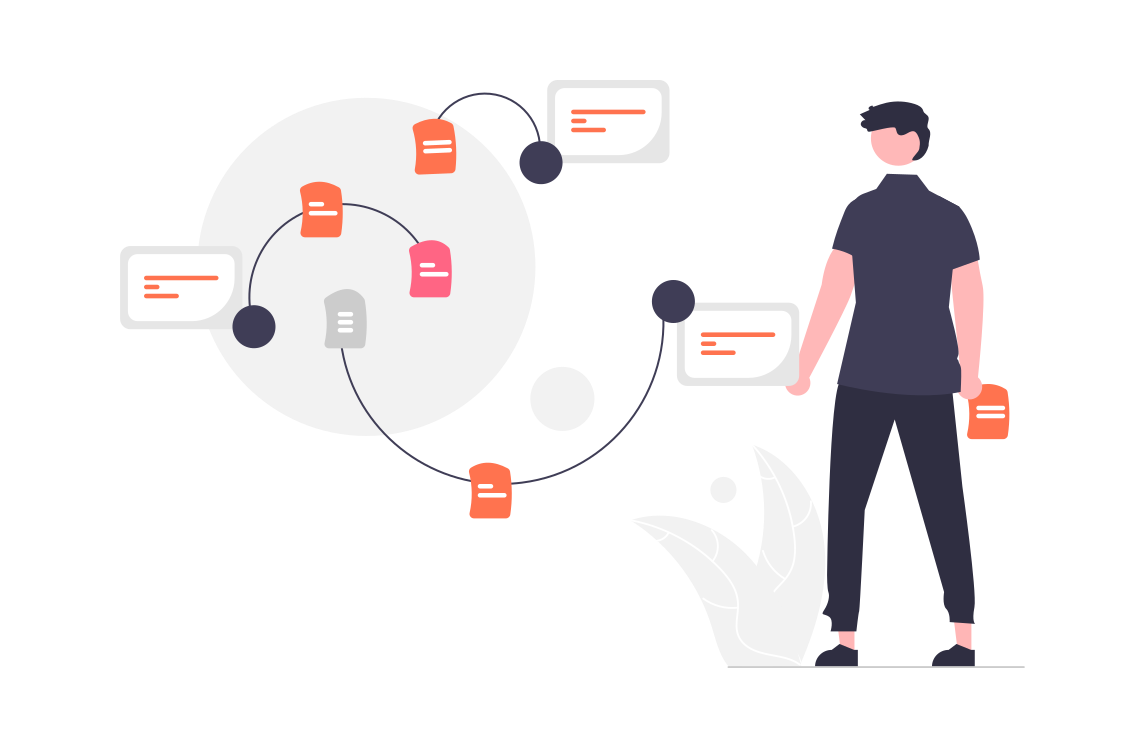In the realm of digital design, it's not merely about crafting visually stunning interfaces. It's about understanding the humans who interact with them. Imagine design as a two-way conversation: one side speaks in colors, layouts, and animations, while the other responds with clicks, scrolls, and emotions. The bridge between the two? Good old psychology. In this article, we’ll demystify how the intricate dance of psychology melds with UX/UI design, ensuring that our digital interfaces don’t just look good, but feel right to the users. Ready to dive into the depths of the user's psyche?
The Connection Between UX/UI Design and Psychology
From Past to Pixels
The dance between psychology and design has been waltzing for ages, long before the digital age beckoned us. Way before our screens buzzed with notifications or we swiped right on sleek interfaces, designs were crafted with a primary focus on human behavior and tendencies. From the hand-drawn posters adorning 19th-century alleyways to the intricate web layouts of the 21st century, there's a consistent thread: an undying pursuit to mesh design intricacies with the labyrinth of the human psyche. By understanding the past, designers today can craft future-ready interfaces with an essence of nostalgia, ensuring every pixel speaks directly to human instincts.
Shaping Digital Interactions
Behind every successful interface lies not just technical prowess but a profound comprehension of human behavior. It's this intersection of human thought patterns with design elements that transform screens from mere digital displays to interactive canvases of human experience. From the tactile satisfaction of a seamless swipe or tap to the subtle unease birthed from cluttered layouts or misplaced buttons, the tenets of psychology play a pivotal role. It's this infusion of psychological insights that metamorphoses ordinary interfaces into intuitive, user-centric masterpieces. In the ever-evolving realm of UX/UI, the blueprint for success is clear: melding the science of the mind with the art of design.
Principles of Human-Centered Design
Embracing Empathy
If there's a guiding light, a North Star in the vast cosmos of design, it's undoubtedly empathy. Truly understanding and immersing oneself in the needs, pains, and desires of users is the cornerstone of impactful design. This deep connection transcends aesthetics and functionality; it ventures into a realm where designs aren't merely tools but bridges. Bridges that connect the logic of code to the rhythm of human emotion. When designers tap into this reservoir of empathy, they are empowered to craft experiences that are not just visually appealing or technically functional, but genuinely resonate with the user's heart and soul, rendering them deeply meaningful.
The Essence of Personalization
In today's digital age, users want to be seen and acknowledged. Recognizing individual needs and preferences is more than just a design trend; it's about fostering genuine connections, one user at a time. Because at the end of the day, it's the human touch that makes all the difference.
Learn more: The Nine Principles of UX Design Psychology: Can You Predict the Behavior of Your Users?
Emotion in User Decisions
Color Me Emotion
Ever felt calm looking at a serene blue or energized by a vibrant red? That's no accident. Designers employ color psychology to evoke specific emotions, ensuring users don’t just see an interface, but feel it.
More Than Just Aesthetic
Imagery and typography go beyond the visual. A poignant image or the right font can set the tone, communicate brand values, and deeply resonate with users. In design, the devil, as they say, truly is in the details.
Recommended reading:
Navigation and Decision Fatigue
Simplicity is the Ultimate Sophistication
The endless scroll. The myriad of options. Such scenarios can quickly leave users overwhelmed. In design, more isn't always merrier. By streamlining choices and creating intuitive paths, we reduce decision fatigue, turning user journeys into pleasant strolls rather than daunting marathons.

Decluttering the Digital Space
A clean interface is akin to a breath of fresh air. By prioritizing essential elements and ensuring logical flow, designers can offer users a seamless experience, free from the chaos of information overload.
Affordances and Signifiers in UX/UI Design
Clues in the Interface
Ever landed on a webpage and instinctively known where to click? That's the magic of affordances and signifiers. These design elements are the unsung heroes guiding users, hinting at what can be done (affordances) and showing them how (signifiers).
Creating Intuitive Dialogues
Effective design speaks. When users interact with an interface, they're in a dialogue with the product. Through well-placed signifiers and clear affordances, designers ensure this conversation is smooth, intuitive, and devoid of frustrating "Wait, what do I do here?" moments.
Conclusion
The journey of exploring the psychology behind UX/UI design reveals a delicate balance of art and science. It’s a dance between the logical intricacies of human cognition and the creative canvas of design. As designers, we are not just architects of digital interfaces, but curators of human experiences. By weaving the threads of psychology into our designs, we cultivate interfaces that are not just visually enticing but emotionally resonant. As the digital landscape evolves, it's crucial to remember that the core of any design isn’t pixels or code—it’s the people who interact with them. Keep their thoughts, feelings, and needs at the forefront, and you'll be on the path to crafting truly impactful designs.
Teaser Alert: Stay tuned for our next piece, where we'll delve deeper into specific psychological triggers that influence user behavior. A deep dive you won't want to miss!
For further reading and insights, don't miss out on these related articles from our blog:
- UX Dark Patterns: How They Harm Users and Damage Your Brand
- The Figma Complete Guide: Useful Tools, Prototyping and Good Practices
- Empower Your Designs with Components in Figma
- How to Animate Your Figma Prototype for Maximum Engagement
- Beyond Aesthetics: The Power of Inclusive Design
Stay informed, stay inspired, and most importantly, design with empathy and understanding.
